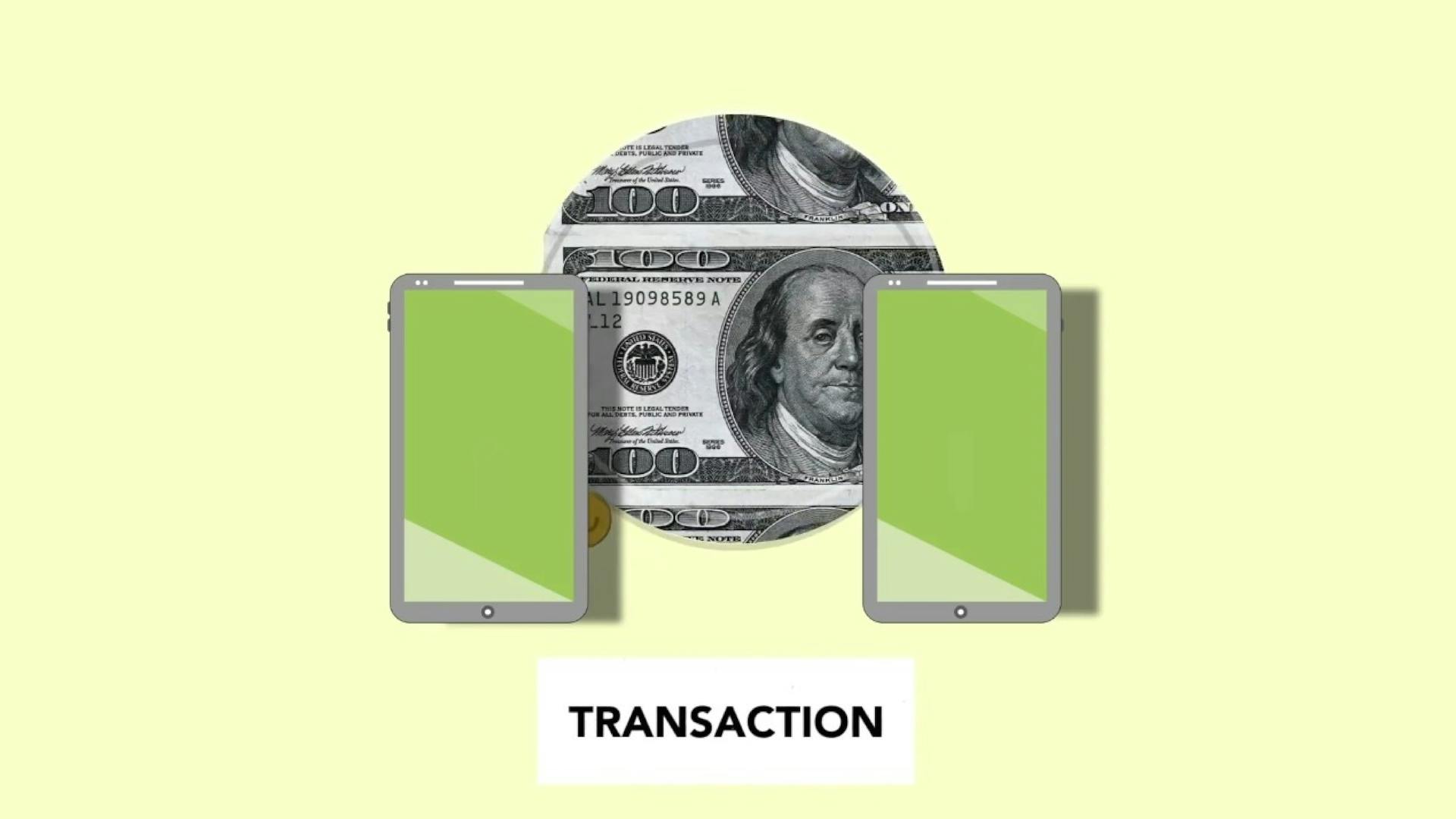
Depositary receipts are a popular investment vehicle that allows you to own a portion of a foreign company. They're essentially a way to buy shares of a non-US company listed on a US exchange.
These receipts are issued by a depositary bank, which holds the underlying shares on behalf of the investor. This process is called "depository receipt issuance."
Depositary receipts can be traded on US exchanges, making it easier for US investors to access foreign markets. This is a significant advantage for investors looking to diversify their portfolios.
By buying depositary receipts, you're essentially buying a claim on the underlying foreign shares. This means you'll receive a proportionate share of the dividends and capital gains of the foreign company.
What Is a Depositary Receipt?
A depositary receipt is a certificate that represents shares in a foreign company, allowing investors to invest in international companies while trading on a local stock exchange in their home country.
This type of investment is advantageous to investors since shares are not allowed to leave the home country where they trade, eliminating the need for foreign currency exchange and brokerage accounts.
Depositary receipts were created to simplify the process of investing in foreign securities, making it easier and more convenient for investors to own shares in international companies.
To understand depositary receipts, it's essential to know what they are, how they work, and the associated risks, including how they are priced, traded, and how dividends are paid out.
An American depositary receipt, or ADR, is a specific type of depositary receipt that represents shares in foreign stock and trades on American stock exchanges.
Here are some key facts about ADRs:
- ADR is a certificate issued by a U.S. bank that represents shares in foreign stock.
- These certificates trade on American stock exchanges.
- ADRs and their dividends are priced in U.S. dollars.
- ADRs represent an easy, liquid way for U.S. investors to own foreign stocks.
- These investments may open investors up to double taxation, and a limited number of options are available.
Types of Depositary Receipts
American Depositary Receipts (ADRs) come in two basic categories. They can be either sponsored or unsponsored.
Sponsored ADRs are established by a company that issues the underlying stock, and they can be categorized into three different levels: Level 1, Level 2, and Level 3. Level 1 has minimal reporting requirements, Level 2 requires registration with the SEC and filing of an annual report, and Level 3 has stricter reporting rules.
Unsponsored ADRs, on the other hand, are created by a bank or broker without the support of the company that issued the underlying stock. They cannot be offered for sale to individual investors in the US unless the foreign company files financial reports with the SEC or requests an exemption.
European (ERs)
European Depositary Receipts (ERs) are a great way for European investors to access foreign companies. They are primarily issued by banks based in Europe.
EDRs can be traded like regular stocks and are listed on European stock exchanges. This simplifies the process for European investors to place funds in foreign companies.
EDRs signify a fixed number of shares belonging to a company outside Europe. They are a convenient option for investors looking to diversify their portfolios.
EDRs pay dividends in euros, which can be a big advantage for investors who prefer to receive their dividends in a familiar currency.
Program Types
There are three different types of ADR programs a company can choose from. These levels differ in terms of their listing exposure and reporting requirements.
A Level 1 program is the lowest level, where shares can only be traded on the OTC market and the company has minimal reporting requirements with the US Securities and Exchange Commission (SEC).
Under a Level 2 program, shares can be listed on a US stock exchange, but the company must register with the SEC and file an annual report that conforms to US generally accepted accounting principles (GAAP) standards.
A Level 3 program is the highest level, requiring the company to meet even stricter reporting rules similar to those followed by US companies.
With a Level 3 program, companies can issue shares to raise capital rather than just list existing shares on a US exchange. Many of the largest companies with ADR programs are Level 3.
A bank or broker can also create an ADR without the support of the company that issued the underlying stock, which is referred to as an unsponsored ADR.
Benefits and Drawbacks
Investing in depositary receipts can be a great way to diversify your portfolio, but it's essential to understand the benefits and drawbacks.
One of the main advantages of depositary receipts is that they're easy to track and trade, making them a fairly accessible investment option. They trade on a stock exchange or over the counter, allowing investors to easily monitor their performance.
Another benefit is that purchasing depositary receipts is relatively easy, as they're available directly through American brokers. This eliminates the need to go through foreign channels to buy stock in a company you may be interested in.
Here are some of the benefits of depositary receipts in a concise list:
- Easy to track and trade
- Available through U.S. brokers
- Denominated in dollars
- Offer portfolio diversification
However, there are also some potential drawbacks to consider. One of the main problems is that depositary receipts may involve double taxation—locally and abroad. This can be a significant concern for investors.
Advantages and Disadvantages
Investing in American Depositary Receipts (ADRs) offers several benefits. They trade on a stock exchange or over the counter, making them easy to access and trade.
One advantage of ADRs is that they're available directly through American brokers. This eliminates the need to go through foreign channels to buy stock in a company you may be interested in.
ADRs are denominated in U.S. dollars, which can be a relief for investors who don't want to deal with foreign currency. But it's essential to be aware of the potential risks associated with currency rate fluctuations.
Investors can easily track their performance by reviewing market data, making it simple to keep tabs on their investments.
Drawbacks
Investing in American Depositary Receipts (ADRs) can be a great way to diversify your portfolio, but like any investment, it's not without its drawbacks.
Limited access to ADRs can be a major issue for individual investors, as they are often only available to institutional investors.
Double taxation is a real concern when investing in ADRs, as you may be taxed on the same income twice, once in the country where the company is based and again in your home country.

Some ADRs may not comply with SEC regulations, which can put investors at risk.
Currency conversion fees can eat into your investment returns, making it harder to make a profit.
ADRs of smaller or less well-known companies may be less liquid, making it harder to buy or sell them without impacting their price.
Here are some of the main drawbacks of investing in ADRs:
- Could face double taxation
- Limited selection of companies
- Unsponsored ADRs may not be SEC-compliant
- Investors may incur currency conversion fees
- Lower liquidity, especially for smaller or less well-known companies
Foreign exchange risk is inherent in any international investment, and ADRs are no exception. If the foreign currency weakens against your home currency, the value of your investment can decline.
Fees and Taxes
Fees associated with depositary receipts can eat into your overall return on investment. These fees may include depositary bank fees, foreign transaction fees, and others, which can range from 0.01 to 0.05 per share.
ADR investors are also subject to foreign taxes and regulations, aside from regular taxes in the U.S., which can result in double taxation on capital gains realized. This can be a significant consideration for investors.
Consider reading: How to Categorize Receipts for Taxes Small Business
Here are some additional fees you may encounter:
- Custody fees: typically range from one to three cents per share, deducted from dividends or passed on to the investor's brokerage firm
- Pass-through fees: intended to compensate the agent bank for providing custodial services, usually $0.01 to $0.05 per ADR per dividend
The fees associated with ADRs can add up, with an international portfolio of ADRs tracking the MSCI EAFE index incurring just under 0.20% of the beginning balance in custodial bank fees each year, based on Fidelity's analysis.
Fees
Fees can add up when investing in ADRs, and it's essential to understand what you're paying for. Higher administrative and processing fees, and taxes, are common expenses associated with ADRs.
These fees can include depositary bank fees, foreign transaction fees, and others, which can eat into your overall return on investment. Be prepared for these additional costs.
The depositary bank that holds the underlying stock may charge a fee, known as a custody fee, to cover the cost of creating and issuing an ADR. This fee typically ranges from one to three cents per share.
You'll also need to consider periodic service fees, or "pass-through fees", intended to compensate the agent bank for providing custodial services. These fees generally run $0.01 to $0.05 per ADR per dividend.
On a similar theme: Can Bank Statements Be Used as Receipts for Taxes
Here are some common fees associated with ADRs:
- Depositary bank fees: $0.01 to $0.05 per ADR per dividend
- Custody fees: one to three cents per share
- Foreign transaction fees: varies
- Pass-through fees: $0.01 to $0.05 per ADR per dividend
Keep in mind that these fees can increase (or decrease) as your portfolio buys more (or less) of a given security when rebalancing. It's essential to review the fees associated with each ADR in your portfolio.
Taxes
Taxes can be a complex and time-consuming aspect of investing in ADRs. Some countries withhold taxes on dividends before they are paid out to the investor.
You may be able to recover some or all of this tax, but the process can be complicated and take a long time. Holders of ADRs realize any dividends and capital gains in U.S. dollars, but dividend payments are net of currency conversion expenses and foreign taxes.
The bank usually withholds the necessary amount to cover expenses and foreign taxes, which means American investors would need to seek a credit from the IRS or a refund from the foreign government's taxing authority to avoid double taxation on any capital gains realized.
ADR investors are not subject to non-US stock transaction taxes, which is a relief. However, foreign tax on dividends will be withheld at the regular rate if the depositary doesn't file the necessary paperwork.
Foreign companies that sponsor listed ADR programs in the US issue financial reports in English, but investors are still subject to the foreign country's taxes and regulations aside from regular taxes in the US.
For example, ADRs receive the same capital gains and dividend taxes as other stocks in the US, but investors are also subject to higher administrative and processing fees because of custodial services from the custodian bank.
Simplified Transactions
DRs simplify the process of buying, holding, and selling shares in foreign companies, as they eliminate the need to understand foreign trading practices or deal with time zone differences.
DRs can save you time and effort by streamlining the process, making it more efficient and convenient.
By eliminating the need to understand foreign trading practices, DRs reduce the complexity of international investments, making it easier for investors to get started.
Frequently Asked Questions
What is the difference between ADR and depositary receipts?
An American Depositary Receipt (ADR) is the entire issuance of shares, while an American Depositary Share (ADS) is the individual share representing a portion of that issuance
What is an ADR and GDR?
An ADR (American Depositary Receipt) is a U.S.-traded receipt representing shares of a foreign company, while a GDR (Global Depositary Receipt) is a receipt traded in multiple countries, representing shares of a foreign company
Why buy ADR instead of stock?
Buying an ADR (American Depositary Receipt) can save you exchange fees by trading in USD, and also provides access to foreign stocks through US-based brokers. This can be a more convenient and cost-effective option for international investors.
Sources
- https://corporatefinanceinstitute.com/resources/wealth-management/depositary-receipt/
- https://www.financestrategists.com/wealth-management/stocks/depositary-receipt/
- https://www.investopedia.com/terms/a/adr.asp
- https://www.fidelity.com/learning-center/investment-products/stocks/understanding-american-depositary-receipts
- https://corporatefinanceinstitute.com/resources/equities/american-depositary-receipts/
Featured Images: pexels.com


